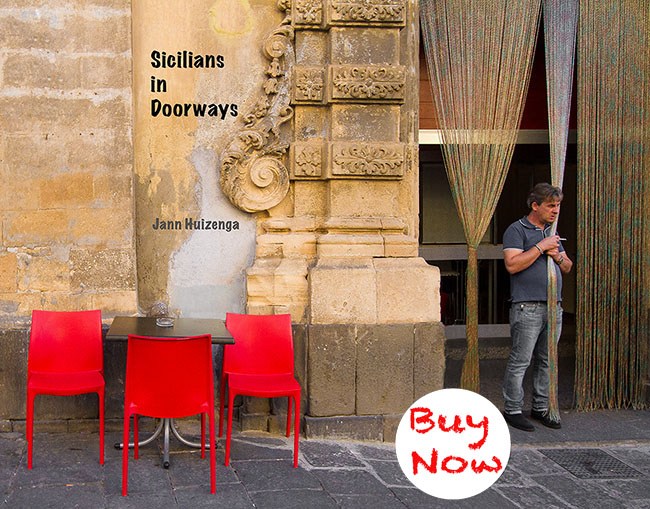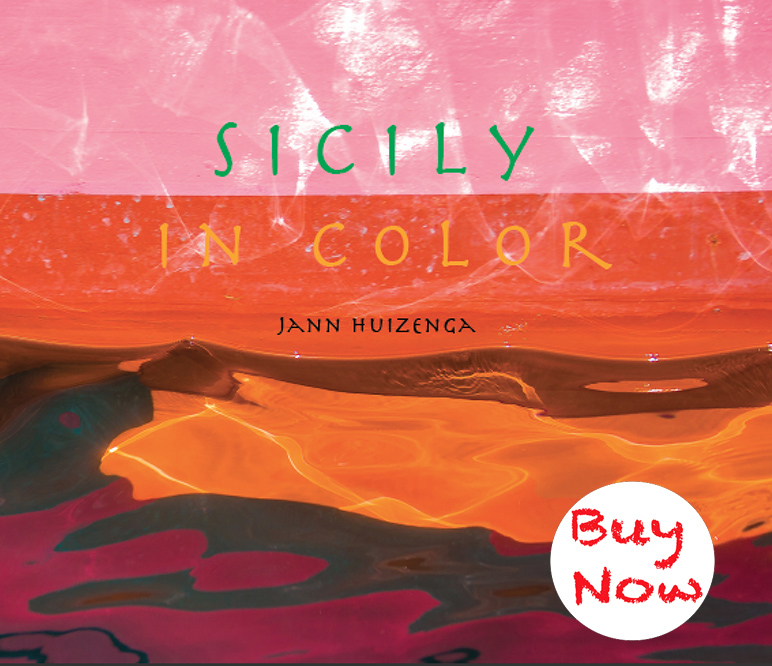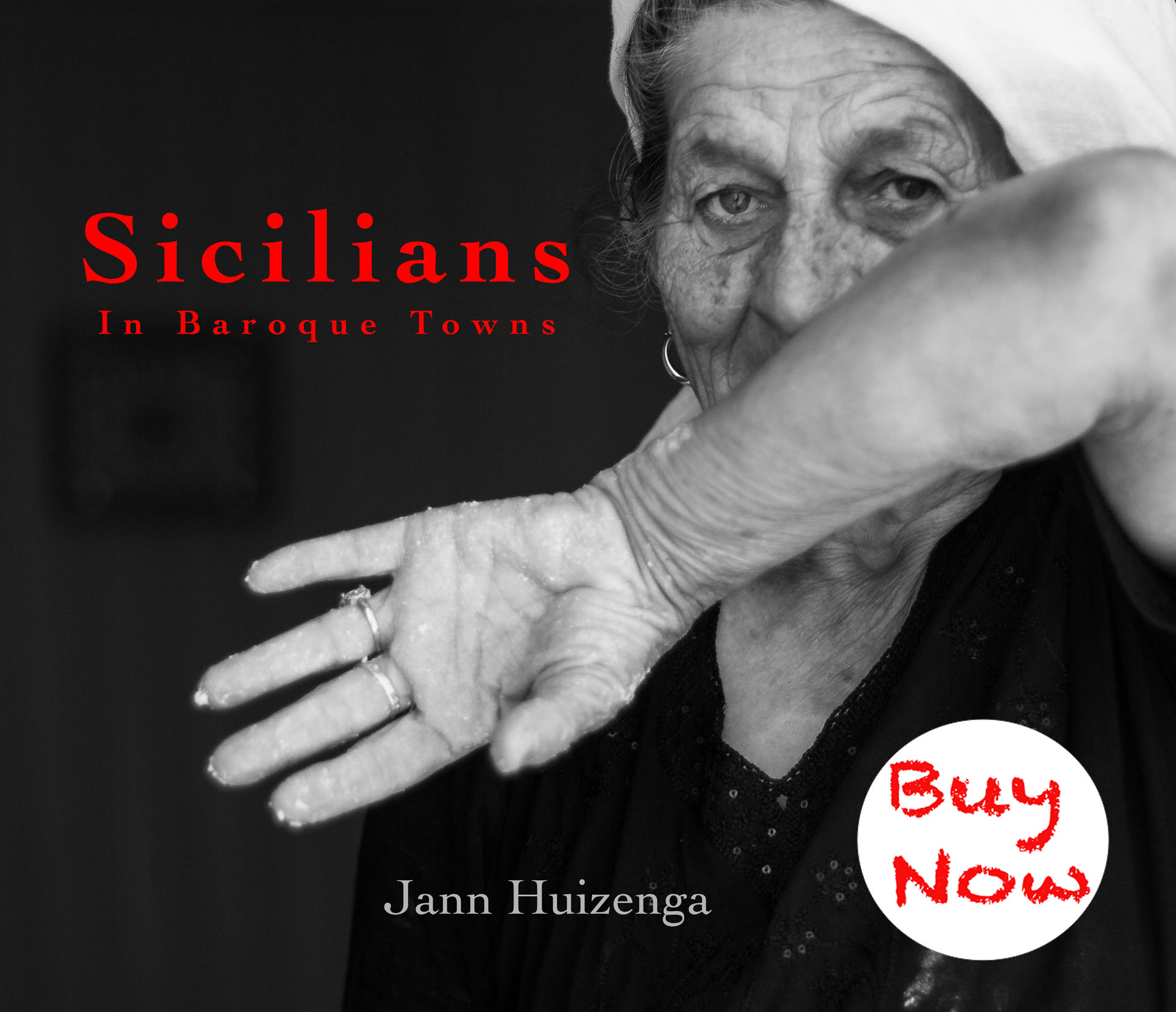May 2, 2010
“Where come from?” asks an artisan who stands puffing a cigarette in a doorway in Caltagirone. He looks like a Sicilian baron, with lush lips, an important nose, and hair shiny with pomade.
“The U.S.”
“Ah! I have cousin Stefano Battaglia, he live in New Jersey. Maybe you know?”
“No0000. It’s a very big place!”
“Take me to America!” the man says with a sudden smile. “America more beautiful than Sicilia.”
I wonder why Sicilians always respond like this when I say where I’m from. Are they hungry for a compliment or do they really believe America is a better place?
When I tell him Sicily is più bella, he frowns, like he doesn’t believe me.
I’m in Caltagirone for my ceramics fix. Some recent purchases: a fragile pot, pasta bowls, and a holy water font, all in Caltagirone’s colors of citrus yellow, Ionian blue, and basil green.
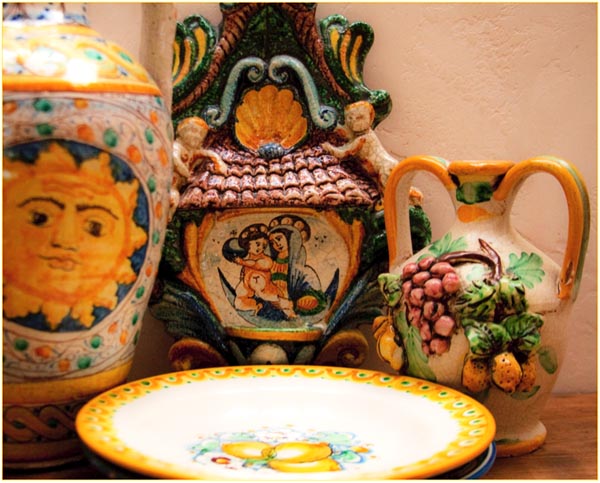
Little mom and pop shops brimming with tiles and jugs and mugs line the famous stairway. The quality varies, and you have to bargain. Some of the best artists are represented in the Palazzoceramico, on your right after you’ve gone up a handful of steps. There’s a museum and a cute coffee shop inside, too.
Or you can fuel up on espresso on the main piazza, Piazza del Municipio. Go up the staircase into the big building with the three arches, and you’ll bump into this cafe.
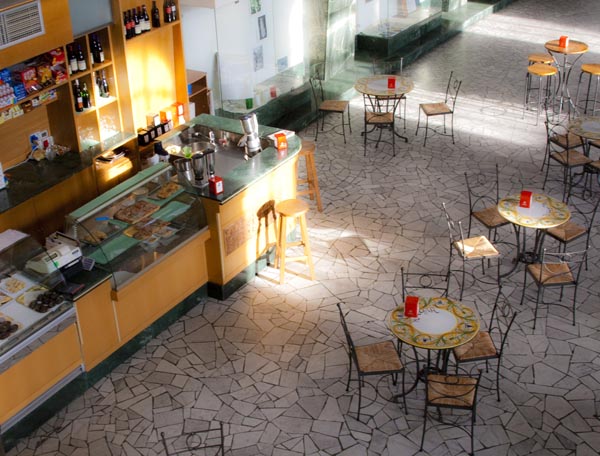
Crane your head upwards and a huge, tangled battle scene with the Moors will come into view.

Caltagirone is one of the eight baroque World Heritage Sites in southeast Sicily. It has lush churches, a superb ceramics museum and pretty gardens. Restaurants are few and far between, but I can recommend la Piazzetta for its good quality and prices (try the cool semifreddo with warm chocolate sauce for dessert). Shops close between 1pm and 4pm (of course), but most are open on Sunday.
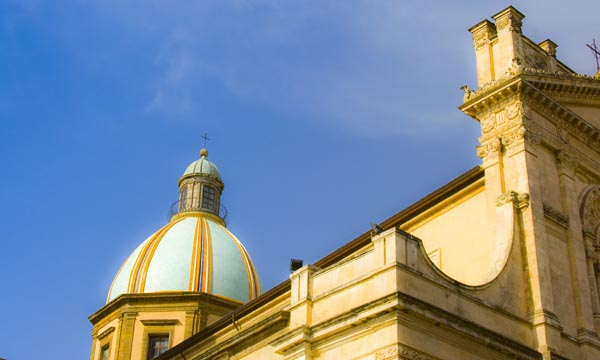
One more thing: Don’t forget to strike up a conversation with the charming pensioners standing in clumps all over town.
Have you been? Do you have other recommendations?
***
Click to subscribe.
Click to leave a comment.
***
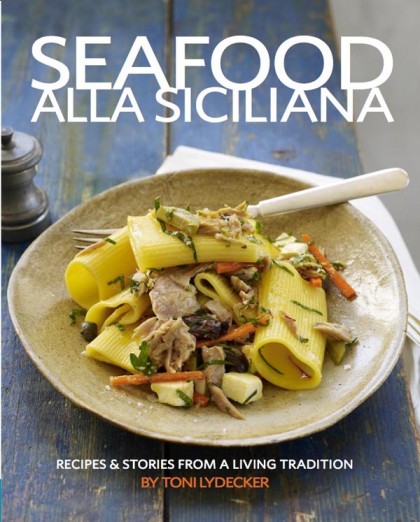 You can win this cookbook! You can win this cookbook!
Toni Lydecker’s Seafood alla Siciliana is somewhat smaller than coffee-table size, with thick, glossy paper, wonderful recipes, very pretty photos, and stories about Sicily’s cuisine. All you have to do is leave a comment on any of my blog posts between now and May 9, and I’ll enter your name for a random drawing on May 10, 2010. (You can enter one comment a day, max.) The only hitch is that you must provide a US or Canadian address for the shipping, so my apologies to readers on other continents.
I love seafood but have always been a fraidy-cat about cooking it myself. I can throw a fillet under the broiler or on the grill and make Ruth Reichl’s amazing shrimp curry, but that’s about it.
So when Toni Lydecker sent me a copy of her gorgeous new book, Seafood alla Siciliana (Lake Isle Press, 2009) I was excited to expand my repertoire.
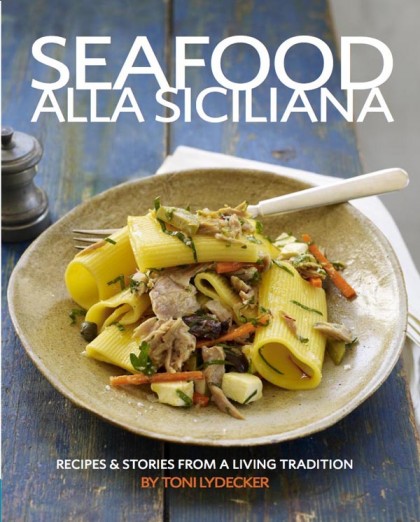
Toni’s recipes are super easy to follow and most are short. Exactly what I need to overcome my fish-cooking phobia.
Before sharing the first recipe I tried from Seafood alla Siciliana (a future blog post will feature another), I have some good news:
You can win this cookbook! It’s somewhat smaller than coffee-table size, with thick, glossy paper, very pretty photos, and stories about Sicily’s cuisine. All you have to do is leave a comment on any of my blog posts between now and May 9, and I’ll enter your name for a random drawing on May 10. (You can enter one comment a day, max.) The only hitch is that you must provide a US or Canadian address for the shipping, so my apologies to readers on other continents.
Mahimahi Stewed with Cherry Tomatoes and Capers from Seafood alla Siciliana by Toni Lydecker
(4 servings; prep 10 minutes; cook 20 minutes)
*4 fillets (about 1.5 pounds) cut from medium-firm fish such as mahimahi, bonito, grouper, sea bream, sea bass, cod, or snapper
*sea salt or kosher salt
*1 small onion, chopped
*1/4 cup extra-virgin olive oil
*1 cup halved cherry or grape tomatoes
*1/3 cup Mediterranean olives (optional)
*leaves from 1 or 2 flat-leaf parsley sprigs, chopped
*1 heaping tablespoon salt-preserved capers, soaked in water for several minutes and drained
*hot red pepper flakes
Directions
Sprinkle the fish fillets lightly with salt.
Combine the onion, olive oil, and 1/4 cup water in a skillet large enough to hold the fillets in a single layer. Bring to a boil. Reduce the heat and simmer briskly but not furiously until the onion is tender. Add the tomatoes, olives (if using), parsley, capers, red pepper flakes to taste, and another 1/4 cup water.
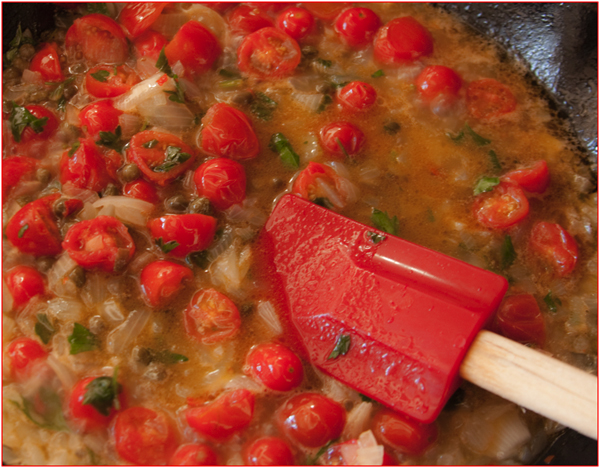 My skillet before the final step of adding the fish fillets Once the cooking liquid returns to a simmer, lay the fillets on top, skin side down. Cover and simmer until the fish is cooked through, about 10 minutes. At this point the tomatoes will have released their juices and there should be a small ladleful of brothy sauce for each serving; if not, remove the fish to a platter, add a little more water and heat briefly. Taste and stir in a bit more salt and pepper flakes if needed.
Ladle the sauce into shallow soup bowls; place a fish fillet in each one.
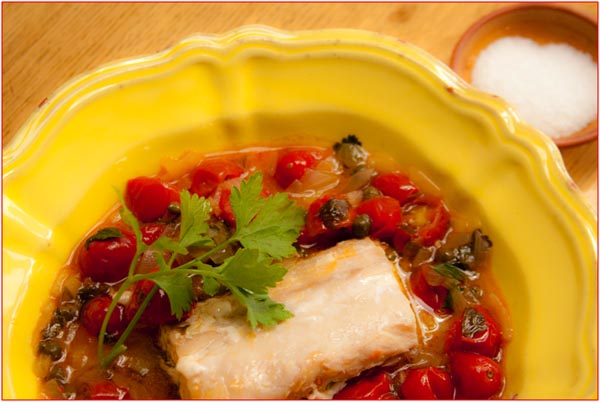 My finished product “Wow,” commented my husband. “This looks and tastes like a restaurant dish!” It brought back a bouillabaisse we had last year in Naples.
Really easy. Really lovely. I served it with a crusty baguette and wished only that I’d added a bit more water at the end, as per Toni’s instructions.
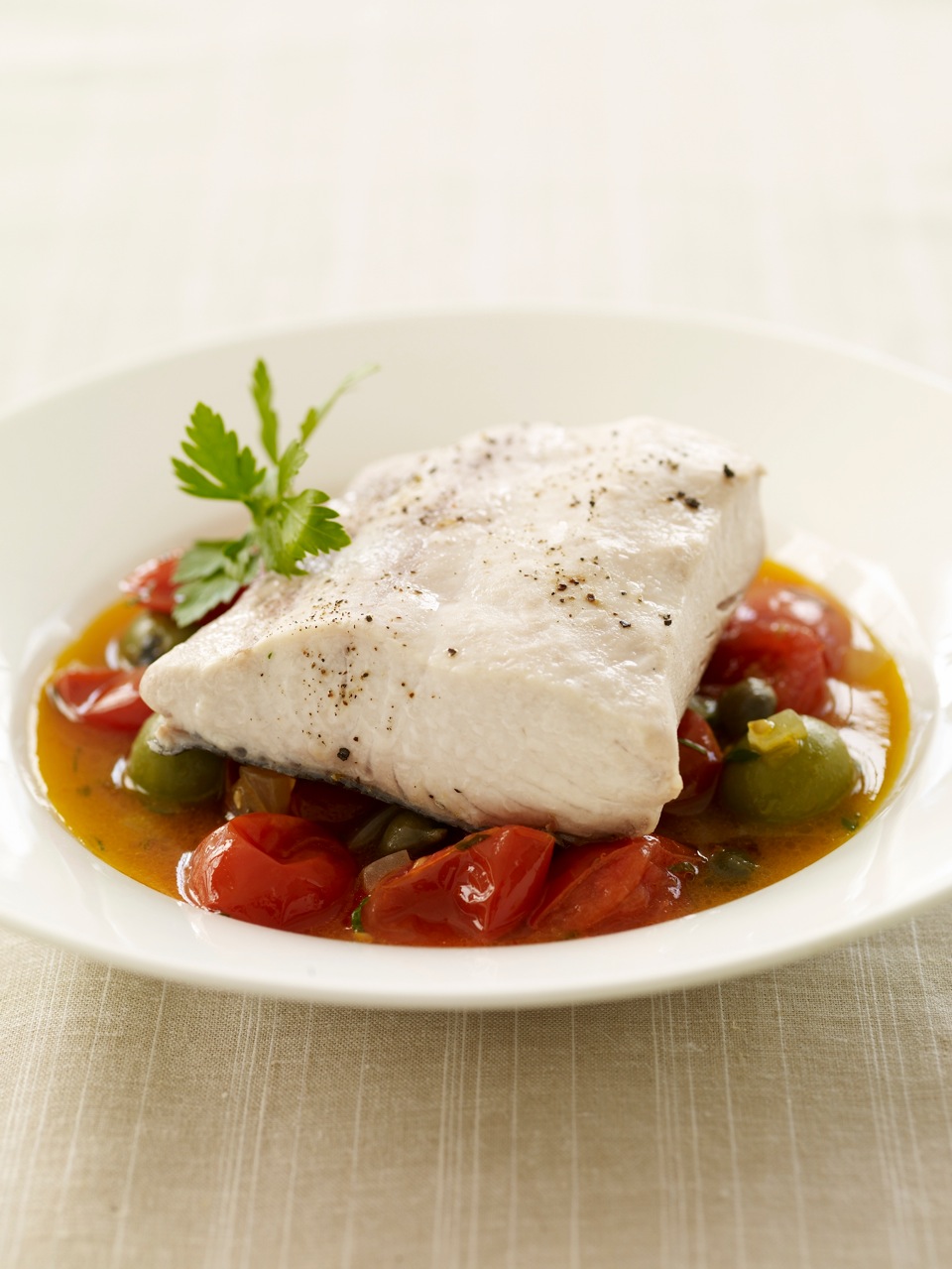 Image from Seafood alla Siciliana by Toni Lydecker, photo by Tina Rupp Click to leave a comment.
Click to subscribe.
April 26, 2010
Tragedy in the bathroom.
Remember those beastly expensive Italian glass tiles I naively ordered?
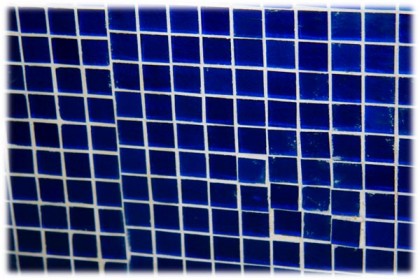
These are them, installed.
When I sprayed glass cleaner over my new sea-blue walls, wiping away the obscuring film of white plaster the mason had left, I could not believe my eyes. Not a single straight line! As if an ill-tempered four-year old had been hard at work.
How could I have allowed this to happen, you ask?
Well, early in the day, curiosity kept prompting me to run down two flights of stairs and check on the work. After 30 minutes of this, the mason said I made him nervous, and would I please go away and cease to bother him? The work is molto delicato, he said, and it is necessario to concentrate and be left solo.
And so away I went, full of cockeyed hope that I’d soon have a useable bathroom.
I returned to the house after two days, descended into the winery-cum-guest quarters and beheld anarchia. Thousands of tiny mosaic tiles stuck willy-nilly onto the wall. I felt like I’d been gored.
But I refused to face reality. Don’t panic, I told myself. It’s rustic. Rustic is good. It fits the theme of the wine cantina. Molto rustico! Charming in its own way. Isn’t it? Isn’t it?????
I called over a few friends to have a look. Horrid, they said, daring to utter the bald truth. Really horrid.
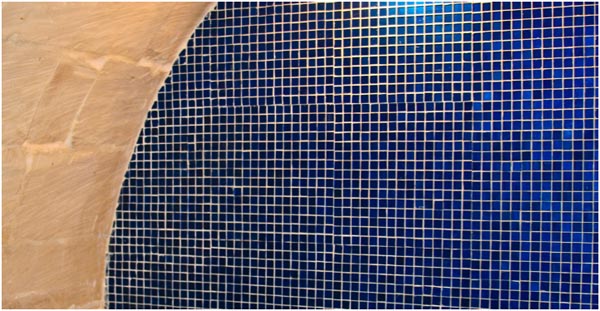
It doesn’t look bad from afar, though, does it? If you kind of … squint at it?
Now what do I do.
***
Click to leave a comment.
Click to subscribe.
April 21, 2010
All the street is a stage in Sicily. Those who show up for a performance had better be decked out for the part.
 Living here feels like walking through a gigantic theatrical production. Flamboyance and fantasia rule. Living here feels like walking through a gigantic theatrical production. Flamboyance and fantasia rule.
 Couples herald their coupledom with coordinated outfits. My own husband will not agree to this. (He finds it a challenge to coordinate his socks.) Couples herald their coupledom with coordinated outfits. My own husband will not agree to this. (He finds it a challenge to coordinate his socks.)
Some dress-alike couples are subtle.

Others not so much.

It wouldn’t be fair to i siciliani to say their obsession with clothing springs from narcissism. Elegance shows civic altruism: you are prettifying the landscape for the delight of your fellow citizens. As the old Sicilian saying goes, Mancia a gustu tò, càusa e vesti a gustu d’àutru; Eat to please thyself, but dress to please others.

Click here to read Shoes Like Gondolas, the true tale of my failed attempt to become an Italian fashion goddess. I wrote it after my first long visit to Ragusa Ibla (Sicily) in 2002.
Thanks so much for reading my blog! Subscribe here.
Leave a comment.
April 15, 2010
It’s that time of year again. The ripe time. The jasmine is sweet; cows low in verdant pastures; a soft breeze blows from Africa.
It’s time for Sicilians to begin doing what they most love doing: eating gelato.

Sicilians claim to have invented ice cream by mixing citrus syrups with the snow of Mount Etna. According to Mary Taylor Simeti, though, the reality is more complicated.
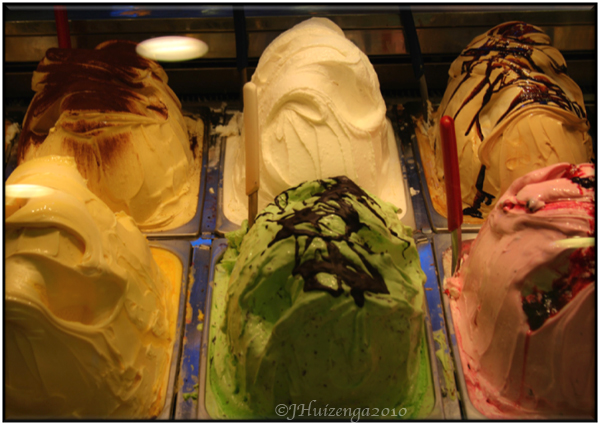

The place to go for ice cream in Southeast Sicily—besides the wonderful Caffè Sicilia in Noto—is Gelati Divini in Ragusa Ibla. You won’t find any icky Baskin Robbin’s flavors (no Cotton Candy, Chocolate Chip Cookie Dough, Oreo Cookies ‘n Cream). These are Old World gelati for grown-ups: Rose Petal, Cream of Marsala, Jasmine, Honey of a Thousand Flowers, Fennel, Persimmon, Moscato d’Asti, Nero d’Avola. Rosaria, the charming proprietess, will always let you sample before you order.
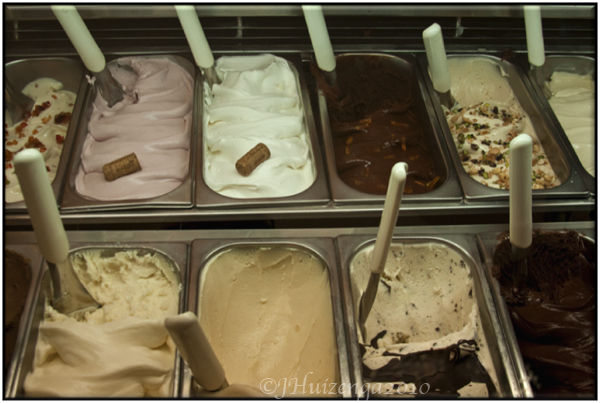 Gelati Divini Sicilian gelato has much less fat than American ice cream, so indulging is not really a sin.
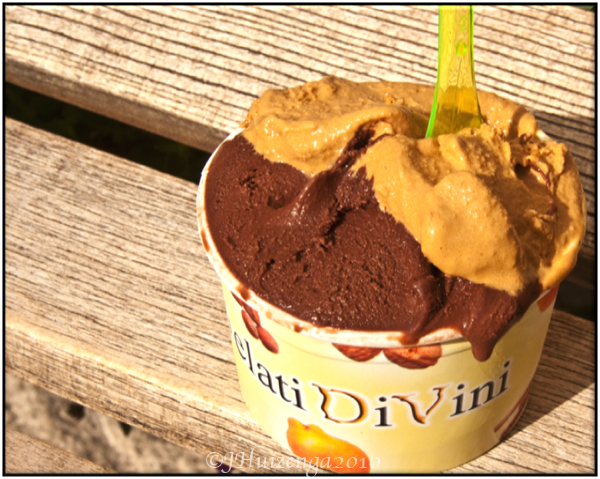 Chocolate and Vino Cotto (Cooked Wine) Taylor Simeti also recommends the Gelateria Cappadonia in tiny Cerda as the best gelateria in western Sicily. (Cerda is about an hour’s drive east of Palermo). In season, they make an artichoke gelato! Do you have a favorite gelateria in Sicily? Or maybe a great Sicilian gelato recipe? Please share!
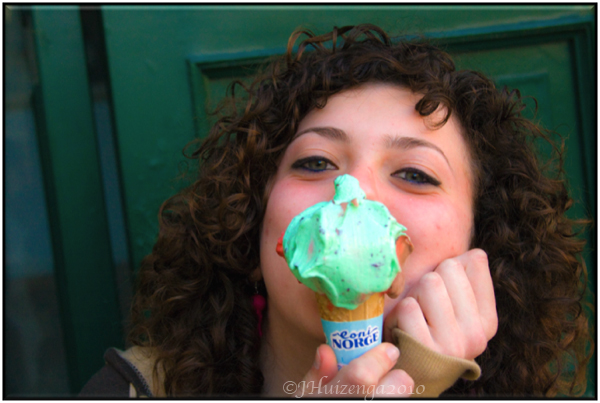
Click to comment.
Click to subscribe.
|
Subscribe to Baroque Sicily
Copyright reserved -
All photos and text on BaroqueSicily are Copyright of Jann Huizenga ©2009-2015, unless otherwise noted. Material may not be copied or re-published without written permission. All rights reserved.
|




 You can win this cookbook!
You can win this cookbook!
















